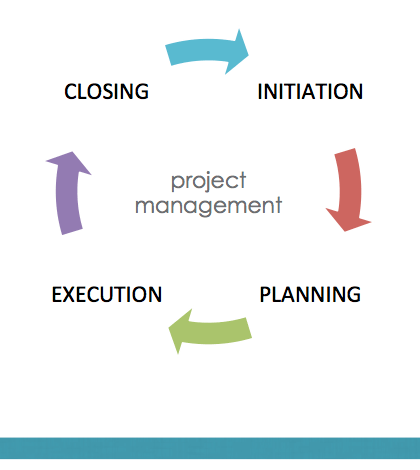Sweepstakes, contests, and giveaways are nothing new in the business world; to be sure, promotions are common tools in any marketer’s repertoire. As new technologies develop, so do marketers adapt and implement novel approaches to reach customers. As early as 1929 when radio was still in its infancy, Radio Revue was already engaging its audience by offering a prize to the reader who best answered, “What is your opinion about Rudy Vallee and his success?”* **
With the tremendous growth of social media over the past several years, it is no surprise that these interactive spaces have become favorite platforms from which brands broadcast and entice. Yet, because social media still plays a somewhat amorphous role in many companies, it can be difficult for organizations to effectively create – and execute – a successful social media promotion. Misconceptions about the casual nature of social media too often lead to “Just Tweet it out” or “Put up a Facebook post or two” type of directives that inevitably fail to provide value to either the brand or its customers. To be more effective, consider structuring your social media planning within a 4-step project management lifecycle of initiation, planning, execution, and closing.
1. INITIATION
The strategic foundation of a social media promotion is set in this kick-off stage. Whether the promotion theme is determined by a single brand manager or a group committee, objectives and goals need to be defined – and agreed upon – here. Identifying one or two primary purposes for this promotion is critical; having a clear “mission statement” to refer to can greatly aid in keeping a promotion on track. Be laser-focused; unless a brand has unlimited time, money, and people, a social media promotion simply won’t be able to accomplish everything for everyone.
Next, define the metrics that determine success for this promotion. Will success be measured in form fills, time spent on site, dollars, or something else meaningful to the business? Usually, the purpose of a social media promotion will inform which metrics are most appropriate. For instance, a social media campaign that promotes a coupon code may be deemed successful based on number of code redemptions or total sales. Defining the metrics will also determine which tools should be used to track and tally these metrics. The team should obtain, become familiarized with, and test any tools being used before the promotion starts to confirm that the success metrics can be accurately collected.
Once success metrics and tools are in place, decide which individuals will be involved. A “simple” social media promotion may actually require input and skills from a variety of people: marketing, creative, public relations, customer service, information technology, third-party vendors, and customer evangelists may all contribute. It is important that everyone working on the promotion have clear roles, responsibilities, and expectations in order to maximize work efficiency and minimize project overhead.
2. PLANNING
In the social media planning phase, establish all critical campaign milestones for the course of the promotion. If the social media promotion is date-driven, as in the case of a holiday or a product launch, it is particularly essential that the team “work backwards” to ensure that sufficient time and resources are available to meet objectives. Mapping out milestones enables the team to identify and course-correct potential problems ahead of time (“If we’re running a paid banner ad on Yahoo! starting here, we’ll need to get it to them by there, which means we need to have final internal approval no later than…”), and planning out the social media campaign’s content on a visual calendar (Google Calendar is a useful and free option) can also help the team spot and address gaps in assets and promotion cadence.
Project milestones will naturally guide the creation of all necessary assets. At a minimum, a promotion will require copy and imagery; most will need much more. Custom landing pages, legal documents for sweeps or contests, and promotion fulfillment processes might be necessary to support the social media campaign. An online social media promotion may even require coordinating an offline tangible item (as Chiquita did by placing Despicable Me 2 Minion stickers on its bananas) or physical location and staffing, as Shari’s Berries and ProFlowers did by hosting their #AintMomGrand event in Grand Central Terminal, New York.
The planning phase should also allow time for brainstorming and pre-auditing of any hashtags, URLs, or account handles that may be used in the social media promotion. An audit is important for two primary reasons. First, a company can avoid potential issues by ensuring their digital parameters are not already being used by another brand or in a context not appropriate to the promotion and its audience. Second, success metrics are much more easily and accurately tracked on “fresh” parameters because there is considerably less signal-to-noise to monitor. Don’t forget to set up tracking before the campaign starts with tools such as TweetReach or RowFeeder in order to avoid a gap in back data collection.
3. EXECUTION
Communication is key to any project’s successful execution. Project management services such as Basecamp, Asana, and Rally are excellent tools that allow a team to track issues and assign maintenance tasks during a social media promotion’s run, yet even free tools such as Google Docs can provide valuable collaboration functionality.
With the tools selected in the planning stage, the promotion should be monitored throughout its duration. Ongoing status updates on the campaign’s performance will not only show whether the campaign is tracking to objectives, but may also supply organic insights. Campaign execution should, of course, be planned as thoroughly as possible before launch, but unexpected improvement opportunities may present themselves. For instance, A/B testing social media copy or posting time may clearly drive desired promotion behavior one way or another.
4. CLOSING
If the social media promotion has tracked effectively throughout its execution, it will be significantly easier to collate final results and tally them against original metric goals to measure success. In addition, it’s important that the team hold a post-mortem meeting to determine the campaign’s efficacy. Were goals realistic compared to outcomes? How closely were objectives met? Highlight any successes achieved during the promotion, as well as any issues that arose. Review any participant feedback collected during or after the promotion. Describe how the team worked together overall. Examine the resources used; would a similar future promotion require fewer, greater, or the same time, budget, and people resources, and why?
With an upfront project management methodology and a comprehensive post-campaign analysis, marketers can create structure and prove value in the still-somewhat flexible realm of social media promotion. I encourage you to share your experiences and thoughts on your approach to social media.
References
* Radio Revue (Dec 1929 – Mar 1930)
** Music and the Rise of Radio in 1920s America – Academia





2 Comments
Hi Kari,
Nice post, but what about the monitoring and controlling stage? There are actually 5 stages in project management – not just 4.
[…] Read more from the original source: Social Media Promotion 4-Step Project Management Lifecycle […]